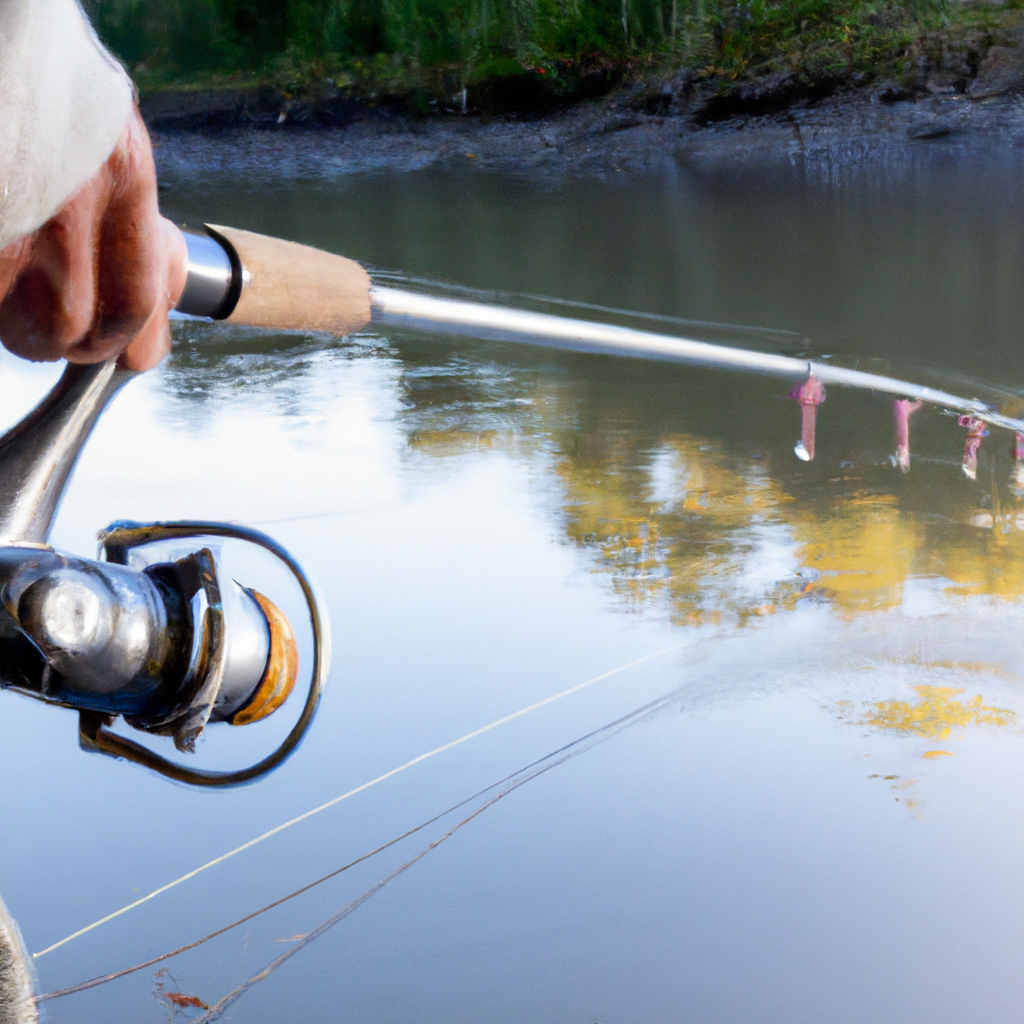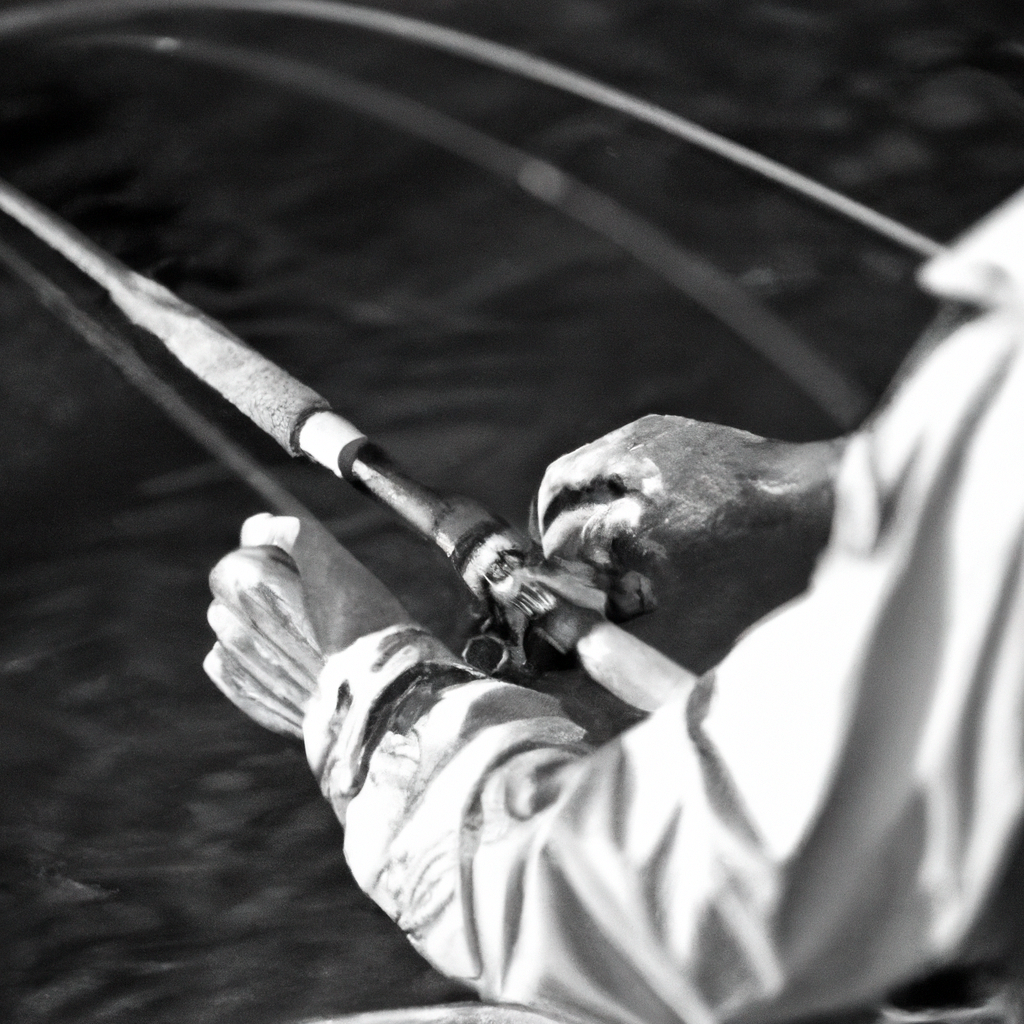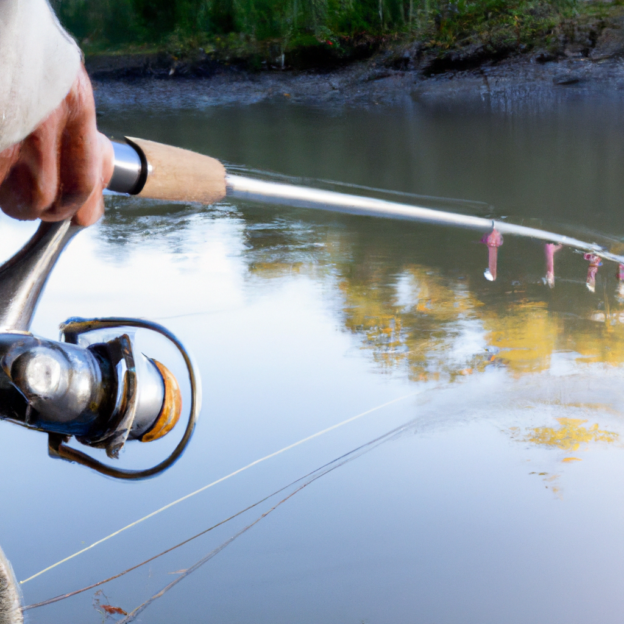Are you curious about the distinction between two popular angling techniques – fly fishing and traditional fishing? While both involve the art of casting a line and reeling in a catch, there are key differences that set them apart. Fly fishing, known for its delicate presentation and use of artificial flies, focuses on luring fish to bite specific patterns. Meanwhile, traditional fishing employs bait and lures to entice a wider range of fish. Join us as we explore these differences and discover which technique suits your angling preferences.

This image is property of pixabay.com.
Equipment
Fly Fishing Equipment
When it comes to fly fishing, the equipment you’ll need is quite distinct compared to traditional fishing. Fly fishing requires specialized gear that is specifically designed for casting lightweight flies. The fly fishing rod is longer and more flexible than a traditional fishing rod, allowing for the delicate presentation of flies. Additionally, the fly reel is designed to hold a thin fly line, which aids in casting and controlling the fly’s movement in the water. Fly fishing also utilizes specialized fly lines, leaders, and tippet material that are essential for achieving the desired casting distance and presentation.
Traditional Fishing Equipment
On the other hand, traditional fishing equipment is generally designed for casting and retrieving heavier lures or bait. Traditional fishing rods tend to be shorter and sturdier than fly fishing rods, providing more power and control when fighting larger fish or casting heavier tackle. Traditional fishing reels also differ from their fly fishing counterparts, as they are often equipped with a spool that retrieves and stores fishing line. Additionally, traditional fishing requires various types of lures or bait, such as spinners, jigs, or live bait, depending on the target species.
Casting Techniques
Fly Casting
Fly casting is a fundamental skill in fly fishing and requires a unique casting technique. It involves using the weight of the fly line, rather than the weight of the lure, to propel the fly to the desired location. Fly casting utilizes a combination of backcasts and forward casts, employing a whipping motion to generate enough momentum to carry the lightweight fly. The goal of fly casting is to achieve accurate and delicate presentations, mimicking natural insect movements and enticing the fish to strike.
Traditional Casting
In traditional fishing, casting techniques vary depending on the type of tackle being used. Spinning or baitcasting techniques are commonly employed, which involve casting a lure or bait using the weight of the lure to propel it through the air. These techniques rely on the angler’s ability to control the speed and distance of the cast, as well as the accuracy with which the lure or bait lands in the water. Different casting methods, such as overhead casts, sidearm casts, or roll casts, can be utilized depending on the fishing conditions and target species.

This image is property of pixabay.com.
Lures and Bait
Fly Fishing Lures and Bait
When it comes to lures and bait, fly fishing predominantly utilizes artificial flies. These flies are meticulously crafted to resemble various aquatic insects, baitfish, or other organisms that fish feed on. They are typically made from feathers, fur, and synthetic materials and are tied onto a small hook. Fly fishing also incorporates nymphs, streamers, and dry flies, each designed to imitate different stages of aquatic life. Unlike traditional fishing, where live bait or lures with treble hooks are common, fly fishing focuses on presenting a lifelike and enticing fly to the fish.
Traditional Fishing Lures and Bait
In traditional fishing, a wide variety of lures and bait can be used depending on the target species and fishing conditions. This can include spinners, spoons, plugs, soft plastics, or live bait such as worms, minnows, or shrimp. Traditional fishing often involves using lures that mimic the appearance and movements of fish or other prey items. It also allows for a wider range of options, as anglers can experiment with different colors, sizes, and styles of lures to attract and entice fish.
Targeted Species
Fly Fishing Species
Fly fishing offers opportunities to target a diverse range of fish species, particularly freshwater species such as trout, salmon, bass, and panfish. Many fly anglers enjoy pursuing trout in streams and rivers, where the delicate presentation of flies is highly effective. Additionally, fly fishing can also be practiced in saltwater environments, targeting species like bonefish, tarpon, redfish, and permit. Fly fishing allows anglers to engage in catch-and-release practices, contributing to the conservation and sustainability of fish populations.
Traditional Fishing Species
Traditional fishing methods cover a broad spectrum of species, both in freshwater and saltwater. From freshwater lakes and rivers to offshore ocean fishing, traditional fishing opens up opportunities to target a wide variety of fish species. Some popular targets among traditional fishing enthusiasts include bass, walleye, pike, catfish, trout, and salmon in freshwater, as well as tuna, marlin, snapper, and grouper in saltwater. Traditional fishing offers anglers the opportunity to not only catch fish for sport but also for food.

This image is property of pixabay.com.
Technique
Fly Fishing Technique
Fly fishing technique revolves around casting, presentation, and imitating natural insect movements to entice fish to strike. Anglers must master different casting techniques, such as roll casts, reach casts, and mending, to effectively present the fly. They also need to develop an understanding of the fish’s feeding behavior and habitat to strategically position themselves for optimal chances of success. Additionally, learning how to properly set the hook and fight fish on a fly rod is crucial to land the desired catch successfully.
Traditional Fishing Technique
Traditional fishing technique varies depending on the type of tackle utilized and the target species. Anglers must develop skills in casting, retrieving, and working the lure or bait to attract fish. Factors such as speed, depth, and action play a significant role in the success of traditional fishing. Mastering techniques like jigging, trolling, or bottom fishing can greatly enhance the angler’s chances of getting a bite. Additionally, understanding the behavior and preferences of the target species is essential for adapting techniques and increasing the likelihood of a successful catch.
Location
Fly Fishing Locations
Fly fishing is often associated with scenic and serene locations, primarily in freshwater environments. Pristine rivers, mountain streams, and peaceful lakes provide ideal habitats for fly fishing. Popular fly fishing destinations include the crystal-clear trout streams of the Rocky Mountains, the picturesque rivers of New Zealand, and the remote Alaskan wilderness. These locations not only offer incredible fishing opportunities but also provide a tranquil and immersive experience in nature for those who engage in fly fishing.
Traditional Fishing Locations
Traditional fishing can take place in a wide range of locations, depending on the desired target species and fishing preferences. It can be practiced in freshwater bodies such as lakes, rivers, and ponds, as well as in saltwater environments like oceans, bays, and coastal areas. Anglers can choose to fish from shore or embark on boat-based adventures offshore. From local ponds and lakes to renowned fishing destinations like the Florida Keys or the Great Barrier Reef, traditional fishing locations offer endless opportunities for anglers of all skill levels to enjoy their favorite pastime.

Cost
Fly Fishing Costs
Fly fishing can require a significant initial investment in equipment and gear. High-quality fly rods, reels, lines, and flies can be quite expensive, especially for top-of-the-line models. However, once the initial investment is made, ongoing costs tend to be relatively low. Fly fishing does not require frequent bait or lure replacements, and flies can often be tied by the angler. Additionally, many fly fishing locations can be accessed without the need for a boat, reducing additional expenses. Ultimately, the costs of fly fishing can vary depending on personal preferences, but the long-term enjoyment and experiences gained often outweigh the initial expenses.
Traditional Fishing Costs
The cost of traditional fishing can vary depending on factors such as gear quality, desired target species, and location. Traditional fishing gear, including rods, reels, lines, lures, and bait, can range in price depending on the brand and materials used. Additionally, ongoing expenses may be incurred for replenishing lost or used lures, buying live bait, or maintaining and fueling a boat if needed. The cost of fishing licenses must also be considered, as well as any additional fees for accessing certain fishing areas or chartering boats. It’s worth noting that traditional fishing can be adapted to fit various budget ranges, making it accessible to a wide range of enthusiasts.
Experience and Skill
Fly Fishing Experience and Skill
Fly fishing often requires a greater level of skill and technique compared to traditional fishing. Casting flies accurately and delicately can be challenging, especially in windy conditions or tight spaces. It takes practice to develop the timing, control, and finesse necessary for successful fly fishing. Additionally, understanding the behavior and preferences of various fish species, as well as the aquatic ecosystems they inhabit, is crucial for consistently catching fish. Fly fishing offers a unique and rewarding experience for those willing to invest time and effort into refining their skills.
Traditional Fishing Experience and Skill
While traditional fishing can be enjoyed by anglers of all skill levels, it still demands a certain level of experience and technique. Casting accurately and effectively, as well as identifying fish behavior and patterns, requires practice and observation. Additionally, learning to properly set the hook, handle and care for fish, and adapt to various fishing conditions is essential for a successful fishing experience. Whether you’re a beginner or an experienced angler, traditional fishing offers the opportunity to continually learn and improve your skills while enjoying the rewards of the sport.

Sustainability and Environmental Impact
Fly Fishing Sustainability and Environmental Impact
Fly fishing is often regarded as a sustainable fishing practice with a minimal environmental impact. Catch-and-release practices are prevalent among fly anglers, promoting the conservation of fish populations. Fly fishing also encourages responsible fishing ethics and emphasizes the importance of preserving natural habitats. The use of artificial flies and barbless hooks minimizes harm to fish, allowing for their safe release. Additionally, fly fishing often promotes awareness and engagement in conservation efforts, ensuring the longevity and health of aquatic ecosystems for future generations.
Traditional Fishing Sustainability and Environmental Impact
Traditional fishing, like any fishing practice, can have both positive and negative impacts on the environment. While catch-and-release practices are common among many traditional anglers, some may also fish for food, impacting fish populations. Overfishing and habitat destruction can be concerns associated with traditional fishing practices. However, responsible fishing practices, adherence to fishing regulations, and a focus on conservation can help mitigate these impacts. It’s important for anglers to be mindful of their actions, practice proper fish handling techniques, and participate in initiatives aimed at preserving and protecting fish populations and their habitats.
Community and Culture
Fly Fishing Community and Culture
Fly fishing has cultivated a vibrant and passionate community worldwide. From local fly fishing clubs to international fly fishing organizations, enthusiasts come together to share knowledge, stories, and experiences. Fly fishing also has a rich cultural history, with traditional techniques and patterns handed down through generations. Many fly anglers appreciate the solitude and meditative qualities of fly fishing, relishing the connection to nature and their surroundings. The community and culture of fly fishing foster a sense of camaraderie and a deep appreciation for the sport, as well as the conservation and preservation of the environments in which it takes place.
Traditional Fishing Community and Culture
Traditional fishing has a strong sense of community and culture that spans across different regions and generations. From local fishing tournaments and competitions to fishing clubs and organizations, traditional fishing creates a shared passion and camaraderie among anglers. Fishing tales, techniques, and knowledge are often passed down through families and communities, keeping traditions alive. Traditional fishing brings people together, whether it’s bonding with friends and family over a day on the water or connecting with fellow anglers who share the same love for the sport. The community and culture of traditional fishing provide a sense of belonging and enjoyment for those who partake in it.
In conclusion, fly fishing and traditional fishing each offer unique experiences and techniques. Fly fishing focuses on delicate presentations, artificial flies, and a connection to nature, while traditional fishing encompasses a broader range of methods and target species. Both approaches have their own equipment, casting techniques, bait, and lures. The choice between fly fishing and traditional fishing ultimately depends on personal preferences, the desired fishing experience, and individual skill levels. Regardless of the chosen method, fishing fosters a connection to the natural world, providing a rewarding and fulfilling recreational activity for all fishing enthusiasts.
